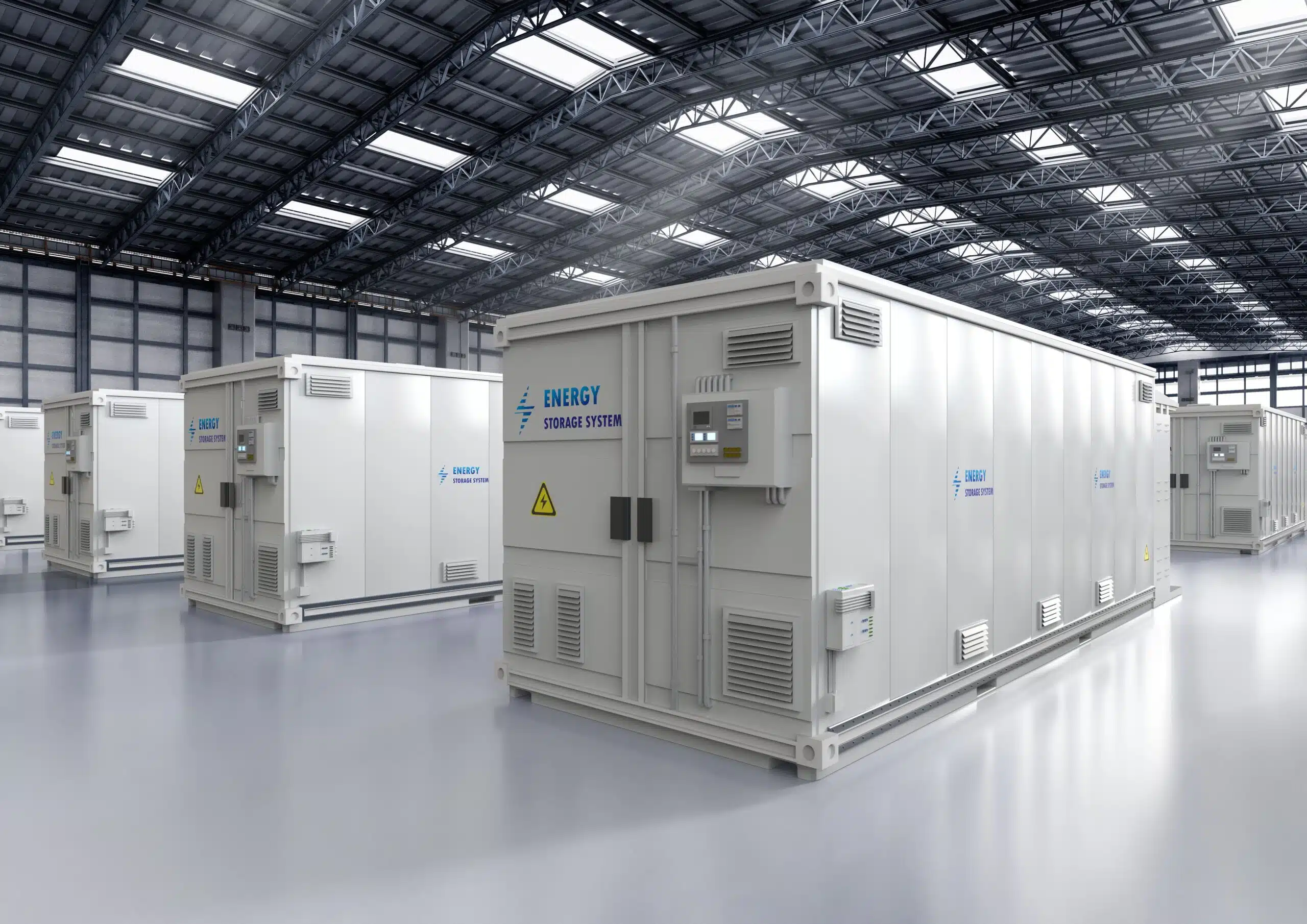- May 3, 2024
- Perspectives
Battery Energy Storage Systems: The Future of Sustainable Energy for Data Centers

There is a growing demand for battery energy storage systems (BESS), a cleaner, more efficient alternative to diesel that can provide backup power for electrical grids and other applications. Battery energy storage systems store electric power from renewable energy sources or power from the grid, thus providing backup power when needed and keeping data safe during events like power outages.
Read more to learn about the advantages and potential challenges of BESS as a reserve power source at data centers and the way data centers can begin the transition from a diesel to a BESS model.
The BESS(T) Way Forward: Bringing Your Data Center into the Future
To keep data centers running smoothly, the current market for backup power has pointed to diesel, which contributes to the changing climate and jeopardizes public health with greenhouse gases and air pollutants. Backup diesel generators are also expensive to maintain, require regular testing, and often operate at a fraction of their capacity, wasting precious energy.
Battery energy storage systems, when coupled with a regenerative source (like solar or wind), store renewable energy for data centers, which eliminates harmful emissions from diesel and contributes to a greener future. For companies looking to meet environmental, social, and governance goals, battery energy storage systems provide just the opportunity to implement those goals as well as practice environmental stewardship.
With an energy ramp rate from the battery system in less than a minute after startup, BESS can speedily deliver backup power. Depending on the manufacturer and operational conditions, BESS sites generally have an HVAC component to regulate the system, which emits noise around 70 to 75 decibels—similar to a vacuum cleaner. This creates much less noise than diesel generators, which makes BESS a more attractive choice than diesel for the surrounding community. Space savings is another of BESS’s assets, since its spatial footprint is more compact than large diesel generators.
Protecting sensitive data, particularly during natural disasters that cause prolonged power outages or periods of grid instability, is more and more of a hot button issue, and owners and operators of data centers as well as industrial applications are looking for resiliency in this area. By investing in BESS, owners can ensure backup power solutions and continuity of essential services for their businesses—whether for residential, commercial, or industrial applications.

Lifespan, Backup, and Regulations
While contemplating the transition to BESS for data centers, keep in mind a few caveats. First off, the BESS lifespan is typically 25-30 years according to experts. However, battery energy storage systems may need energy augmentation around the 10-year mark to maintain the original amount of power the system is rated for. Secondly, while BESS can serve as a critical backup during power outages due to extreme weather or an unstable grid, battery energy storage systems are not a full replacement for an uninterruptible power supply (UPS). However, BESS can be used in conjunction with a UPS to help guarantee a data center will continue to function during power outages.
Another thing to keep in mind is battery energy storage systems are a newer technology, so many states are still determining permitting processes for battery storage use. Regulations aren’t developed yet or are very new in many jurisdictions, leading to an approach that varies by state.
Making the Transition to BESS
When it comes to transitioning a data center that runs on diesel back up power to a BESS model, there are various types of BESS to consider. Lithium-ion batteries are one of the most popular types. With a 2-4-hour rating, they have the highest energy density of the available options, and they are also lightweight, making them easy to transport and install. While lithium-ion is the predominate chemistry in BESS today, material science is continuously evolving and alternative chemistries for batteries are starting to come to market, such as iron-flow and zinc-bromine-based batteries. Alternative chemistries can be more cost-effective and have longer lifespans, with lessened or no need for energy augmentation, but they do have a tradeoff when it comes to energy density.
Cost-wise, there are financial incentives to BESS owners to allay costs. Federally, there is an incentive tax credit (ITC) used for solar that can be applied to battery energy storage systems that are powered by at least 75% renewable energy. Since 2022, this ITC benefit has expanded from projects entirely charged by a renewable resource to standalone energy storage, which makes BESS eligible. State by state, incentives vary. New York, for instance, plans to have 70% renewable energy by 2030 and has incentives that can be applicable to BESS to encourage this goal.
BESS Challenges and Solutions for Data Centers
When preparing to transition to a BESS model to support data resiliency, some roadblocks may occur. First off, battery energy storage systems can experience battery degradation over time. To counter this, regular maintenance is essential to ensure the safe operation and longevity of BESS at data centers. Recurring battery maintenance should be conducted to inspect for wear and tear, keep the surrounding area free from debris and contaminants, and test voltage and capacity to monitor the battery’s performance and condition. Should issues arise, BESS will need to be replaced or augmented to ensure power capacity is maintained at the center or facility in question.
Mitigating fire hazards and thermal runaway is another challenge that can impact the reliability and safety of BESS at data centers. This is something for owners and operators to be aware of but should not be a deterrent. At some BESS facilities, the batteries themselves can catch fire—however, if containers are far enough apart, a fire will not spread. This allows emergency responders to contain the fire by wetting perimeter areas and letting the fire extinguish itself. Many battery manufacturers today ensure there is some type of fire suppression inside the containers to mitigate thermal runaway, which reduces the temperature of the battery module before it ever catches fire. Other manufacturers include a dry type of suppression within the individual units. Additional ways to prevent fire hazards are to perform a fire suppression analysis and to use a battery type which typically doesn’t have combustibility issues.
Furthermore, transitioning to BESS can be more expensive than diesel systems on a dollar per kilowatt-hour or megawatt-hour basis—depending on what the peak demand would be. However, this expense is a short-term drawback when considering the bigger picture of using BESS to safeguard a data center. Recouping costs are tied to how battery energy storage systems are used. For example, if battery energy storage systems are being used for peak shaving or grid support functions, then the costs of BESS can be recouped faster than with a diesel generator.
Battery energy storage systems are still a rapidly evolving technology—one that may pose a few challenges for data centers to adopt. But for owners and operators of data centers who are looking to become more sustainable and efficient, investing in BESS is a great option. With its use of renewable energy, swift energy ramp rate, and resiliency in data backup, battery energy storage systems are the future of sustainable data centers.
About the Authors

Chris Hanna, PE
Chris is an electrical engineer focused on the design of power distribution systems for commercial scale solar Photovoltaic, BESS, and EV charging facilities. His technical expertise includes electrical power systems design, lighting design, cellular/telecommunications design, and electrical/communications utility coordination.

AJ Jain, PE
AJ is an electrical engineer with more than a decade of experience supporting utility, commercial, and government clients in solving complex electrical design problems, including bulk EV charging infrastructure, energy storage, backup power, and operational and safety improvement studies. His projects have met mission-critical needs, including support of the US nuclear power industry, Department of Defense, Department of Energy, and data centers.

Trisha Sieh, PE
Trisha is a civil engineer with 17 years of experience in planning, design, and construction projects with a focus on complex projects and innovative solutions, particularly in the mission critical space. Her background is in the planning and execution of development projects, including preliminary site planning, site feasibility, grading and drainage design, utility design, and construction support services.
